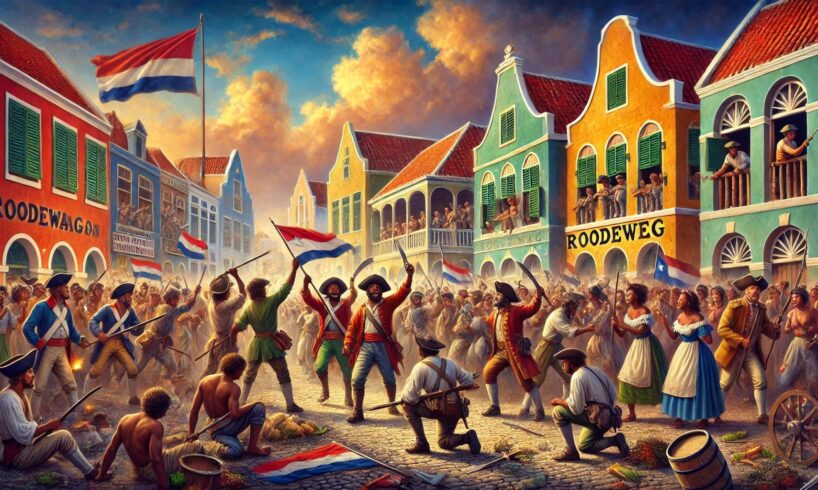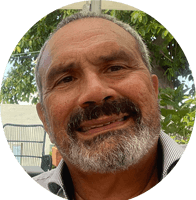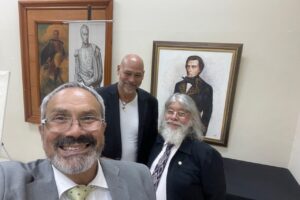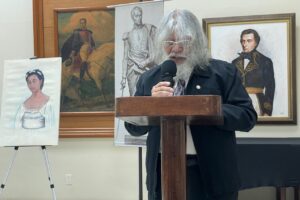

The Battle of Curaçao, 1804: The Indomitable Island’s Triumph
The British fleet anchored at Piscadera Baai, their red uniforms gleaming as they advanced with precision. They landed in force, overwhelming the small Dutch garrison stationed there. The Dutch soldiers, unprepared for the ferocity of the attack, abandoned their posts, leaving behind their cannons, which the British quickly seized.
Emboldened by their victory, the British moved toward Roodeweg, a key route to the heart of Curaçao. They fortified positions near what is now known as Fort Waakzaamheid, setting their sights on the prosperous districts of Punda and Otrobanda.
As the British began their assault on the towns, the resistance from the locals grew fiercer. In Fort Amsterdam, a British cannonball struck the Fort Church, a visible scar that remains to this day as a testament to the conflict. Yet, the Curaçaoan spirit refused to waver.
The Call to Arms
Manuel Carlos Piar, a fiery and determined leader, and Luis Brión, a brilliant strategist, united the island’s defenders. They were not soldiers but everyday people—farmers, laborers, former slaves, free Black citizens, and tradesmen. Armed with whatever they could find—stones, sticks, knives—they answered the call to protect their homeland.
Piar addressed the crowd, his voice steady despite the chaos:
“They have cannons, but we have courage! They have guns, but we have our hearts and our land. Today, we fight not as individuals but as one people. We will drive them from our shores!”
The crowd roared in agreement, their makeshift weapons gleaming under the Caribbean sun.
The Battle of Roodeweg
The British, confident after their earlier victories, underestimated the ferocity of the Curaçaoan fighters. As they advanced down Roodeweg, they were ambushed by Piar and his militia. Stones rained down from high ground, knives flashed in the sunlight, and sticks struck with surprising force.
The British, taken aback by the resistance, fought fiercely but were forced to retreat toward Groot Kwartier. Piar, relentless, led the pursuit, his militia emboldened by their initial success. At Groot Kwartier, another battle ensued, with the Curaçaoan fighters pushing the British further back.
The Final Stand at Dein Kanga
The retreating British forces regrouped at Dein Kanga, hoping to hold their ground. But Piar, Brión, and the Curaçaoan fighters were relentless. Using guerrilla tactics, they attacked from all sides, their cries of defiance echoing through the hills. The British lines crumbled under the relentless assault.
Desperate and demoralized, the British soldiers abandoned Dein Kanga and fled back to Piscadera Baai, hoping to escape to their ships. Piar and Brión pursued them to the coast, ensuring they had no chance to regroup. Under relentless pressure, the British forces boarded their ships and sailed away, defeated and humiliated.
Victory and Legacy
The victory at Curaçao was not just a military triumph but a testament to the unbreakable will of its people. Against a professional army, the islanders had fought with bravery, resourcefulness, and unity.
As the British ships disappeared over the horizon, Piar stood on the shores of Piscadera Baai, his face hardened but triumphant. He turned to his people and declared:
“Today, we have shown the world that Curaçao will never bow to oppression. We are the indomitable island!”
The crowd erupted in cheers, their voices carrying across the bay and into history.
A Testament to Courage
To this day, the scars of the battle remain. The cannonball embedded in the Fort Church in Punda serves as a silent witness to the island’s defiance. The story of the 1804 resistance lives on in the hearts of Curaçao’s people, a powerful reminder that even the mightiest armies can be humbled by the courage of a united people.

Tico Vos is a professional photographer, producer, and tourism specialist. He has been documenting the History, Culture, and News of Curaçao. This site is a documentation of the history of Manuel Carlos Piar.





